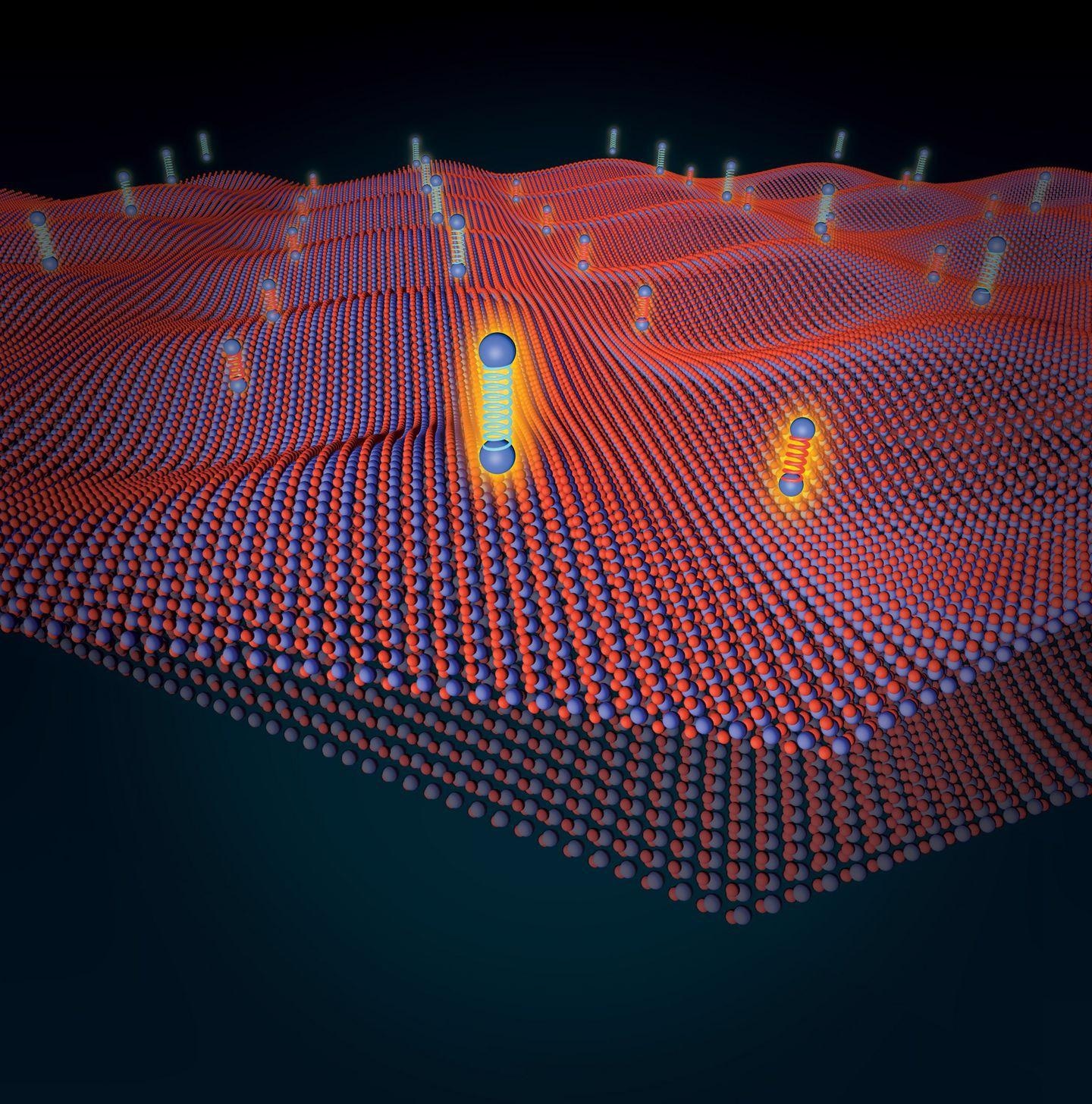Mar 24 2021
Graphene is made of one single layer of carbon atoms, and the discovery of this material was the starting point for a worldwide race: currently, the so-called “2D materials” are made of various types of atoms.

Image Credit: Erik Zumalt, Lukas Linhart.
In general, atomically thin layers exhibit highly unique material properties that are not found in traditional, thicker materials.
Another page is being added to this field of study: stacking two such 2D layers at the right angle paves the way for even more new possibilities. The manner in which the atoms in the two layers interact gives rise to intricate geometric patterns. These patterns have a decisive effect on the material properties, as demonstrated recently by a team of researchers from TU Wien and the University of Texas (Austin).
Phonons, or the lattice vibrations of the atoms, are considerably affected by the angle at which the two material layers are positioned on top of each other. Tiny rotations of such a layer can considerably modify the material properties.
The Moiré Effect
The basic concept can be attempted at home using two fly screen sheets—or with any other regular meshes that can be positioned on top of each other. When both grids are placed perfectly congruent on top of each other, it is challenging to tell from above whether it is one or two grids. There is no change in the regularity of the structure.
However, when one of the grids is turned by a small angle, in some places, the gridpoints of the meshes match roughly, and in other places, they do not match. This leads to the formation of interesting patterns—that is, the well-known moiré effect.
“You can do exactly the same thing with the atomic lattices of two material layers,” stated Dr Lukas Linhart from the Institute for Theoretical Physics at TU Wien. The fascinating thing is that this can drastically alter specific material properties—for instance, graphene turns into a superconductor when two layers of this material are combined in the right way.
We studied layers of molybdenum disulphide, which, along with graphene, is probably one of the most important 2D materials. If you put two layers of this material on top of each other, so-called Van der Waals forces occur between the atoms of these two layers. These are relatively weak forces, but they are strong enough to completely change the behaviour of the entire system.
Florian Libisch, Professor, TU Wien
Libisch led the project at TU Wien. In the case of comprehensive computer simulations, the researchers studied the quantum mechanical state of the new bilayer structure formed by these weak additional forces, and how this influences the vibrations of the atoms in the two layers.
The Angle of Rotation Matters
If you twist the two layers a little bit against each other, the Van der Waals forces cause the atoms of both layers to change their positions a little bit.
Dr Jiamin Quan, The University of Texas at Austin
Dr Quan headed the experiments in Texas, which verified the results of the calculations: The angle of rotation can be used to tune the atomic vibrations that are physically possible in the material.
“In terms of materials science, it is an important thing to have control over phonon vibrations in this way,” stated Lukas Linhart.
The fact that electronic properties of a 2D material can be changed by joining two layers together was already known before. But the fact that the mechanical oscillations in the material can also be controlled by this now opens up new possibilities for us. Phonons and electromagnetic properties are closely related. Via the vibrations in the material, one can therefore intervene in important many-body effects in a controlling way.
Lukas Linhart, Institute for Theoretical Physics, TU Wien
Following this initial explanation of the effect for phonons, the team is now attempting to describe phonons and electrons in combination, with the hope of learning more about crucial phenomena such as superconductivity.
Therefore, the material-physical Moiré effect renders the already rich research field of 2D materials even richer—while increasing the likelihood of continuing to discover new layered materials with properties that could not be achieved earlier and facilitating the use of 2D materials as an experimental platform for utmost basic properties of solids.
Journal Reference:
Quan, J., et al. (2021) Phonon renormalization in reconstructed MoS2 moiré superlattices. Nature Materials. doi.org/10.1038/s41563-021-00960-1.